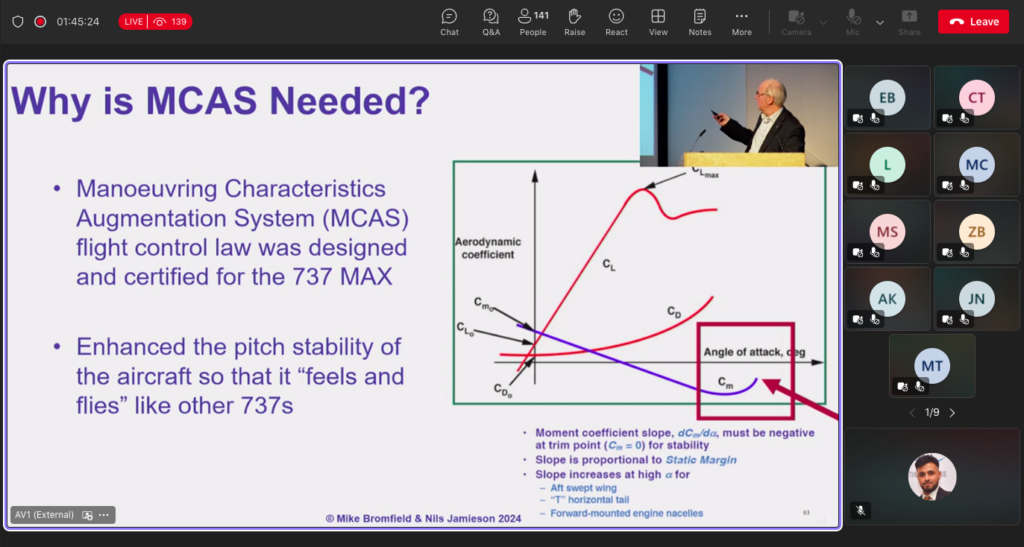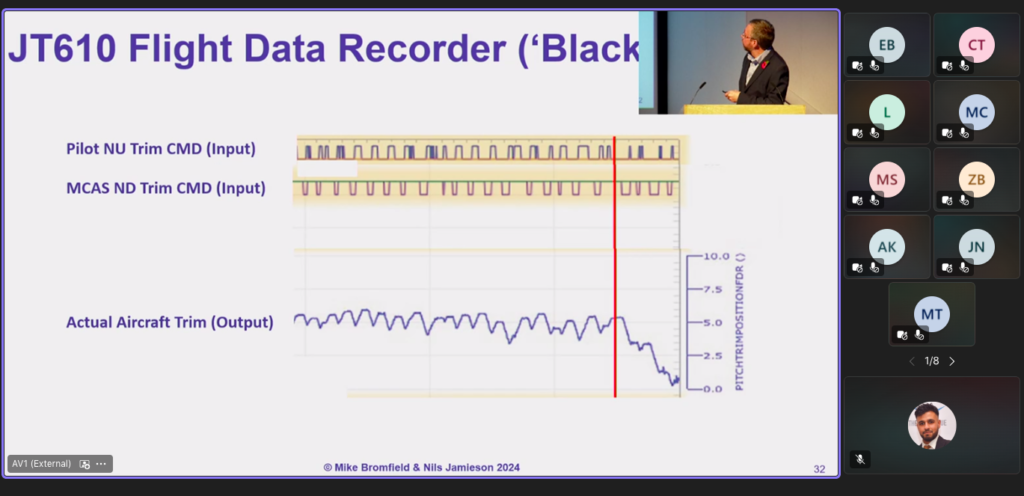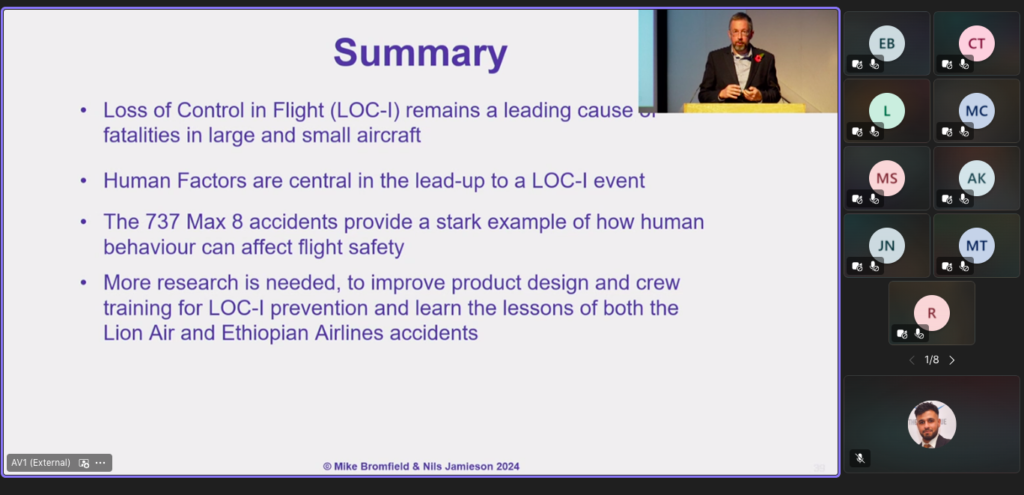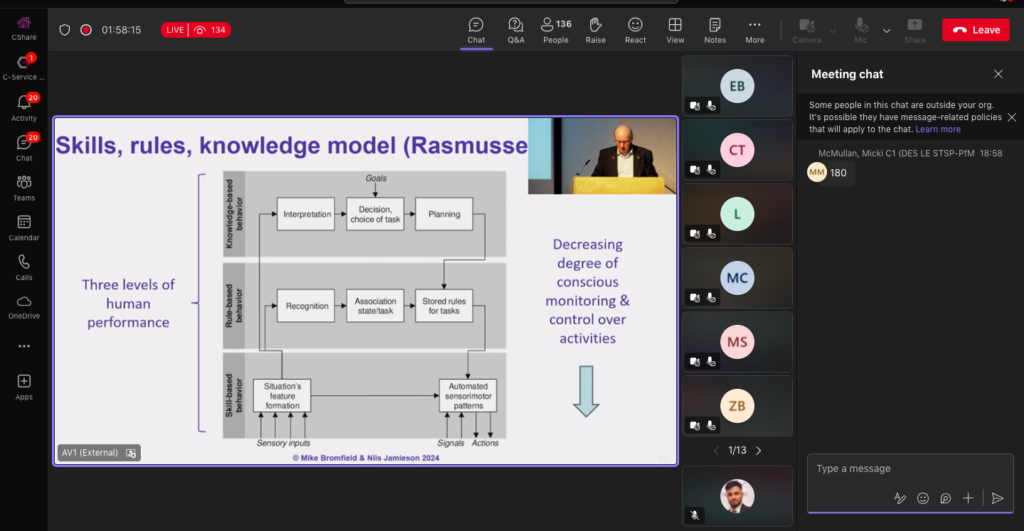Royal Aeronautical Society – Lion Air JT610 Case study seminar
Lion Air Case Study Seminar at RAeS
Recently, I attended the Royal Aeronautical Society (RAeS) – Lion Air Flight JT610 – Loss of Control Case Study Seminar. In this blog, I will share a summary of what was discussed.
Flight background
On October 29, 2018, the crash of Lion Air Flight JT610 resulted in the loss of all 189 passengers and crew members on board. The flight was operated by a Boeing 737 MAX 8, crashed just minutes after taking off from Jakarta, Indonesia.
One of the key factors contributing to the crash was the MCAS system, or Maneuvering Characteristics Augmentation System. Let’s look a little into the MCAS system.
MCAS System
The purpose of the MCAS system was designed to prevent the Boeing 737 MAX from stalling in certain flight conditions. The reason this was installed was because the Max model, an updated version of the Boeing 737, was equipped with larger engines, which naturally caused a shift in the plane’s aerodynamics. To counteract the risk of the plane’s nose pitching too high, the MCAS system was put in place by Boeing to automatically push the nose of the aircraft down if it detected an angle of attack (AOA) that was too steep.

In essence the idea behind MCAS was to keep the aircraft in safe, stable flight by preventing stalls, which could be catastrophic at low altitudes.

How did the MCAS contribute to Lion Air JT160 crash?
It is clear the crash of Lion Air JT610 occurred due to a malfunction in the MCAS system.

The system relied on angle of attack sensors to determine the aircraft’s flight angle. If one of these sensors provided faulty data indicating that the plane was approaching a stall, the MCAS would automatically activate to push the nose of the plane down as discussed in the other column.
In the case of Lion Air JT610, one of the sensors provided incorrect data, leading the MCAS system to repeatedly push the plane’s nose down. The pilots attempted to counteract the system’s actions by manually overriding the controls – this can be seen in the above slide where the pilot is putting in the exact amount of counteraction to the MCAS’ input. The MCAS continued to engage, overpowering their attempts to regain control. This cycle continued, and tragically, the aircraft crashed into the sea.

Critical review based on the lecture
One of the big takeaway was the issues that lay with MCAS. One of which was that MCAS was too aggressive. For instance, the MCAS system was designed to operate automatically without notifying the pilots. Therefore, in this case this lead to confusion and didn’t giving them enough time to intervene effectively despite their best efforts. It relied on only one AOA sensor, and if that sensor provided faulty data, there was no backup system to prevent the MCAS from acting. This lack of redundancy meant that a malfunctioning sensor could trigger a series of dangerous events, as it did in the Lion Air crash.
Going forwards
After another incident with Ethiopian Airlines Flight 302 the 737 Max was grounded. It lead to complete overhaul of the MCAS system. Multiple AOA sensors were applied, training was provided and it also raised questions around re-evaluating how new technologies should be introduced into the cockpits. Sadly, in aviation lessons are written in blood. I hope some key lessons were learnt – hopefully, aviation constantly evolves through the lessons learned from unfortunate events like the one discussed today.


I also really liked this slide here so I thought it was worthy of adding below:
